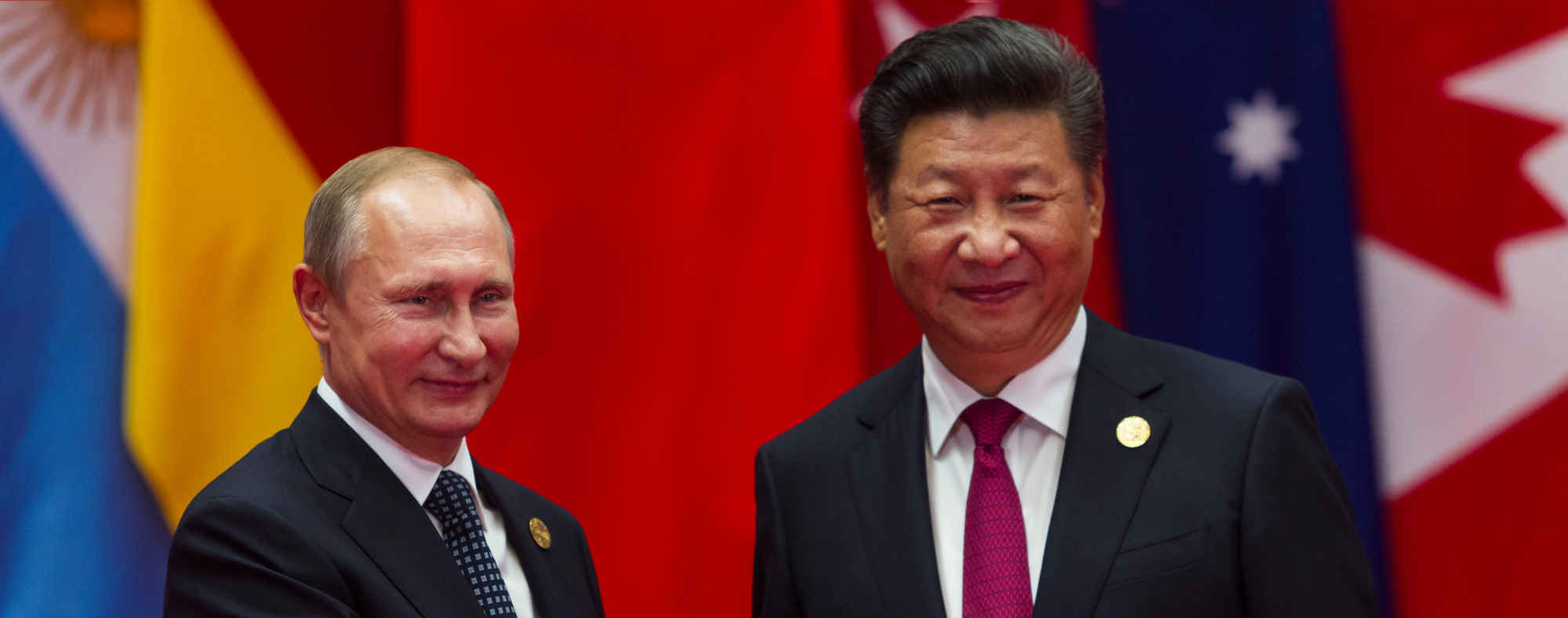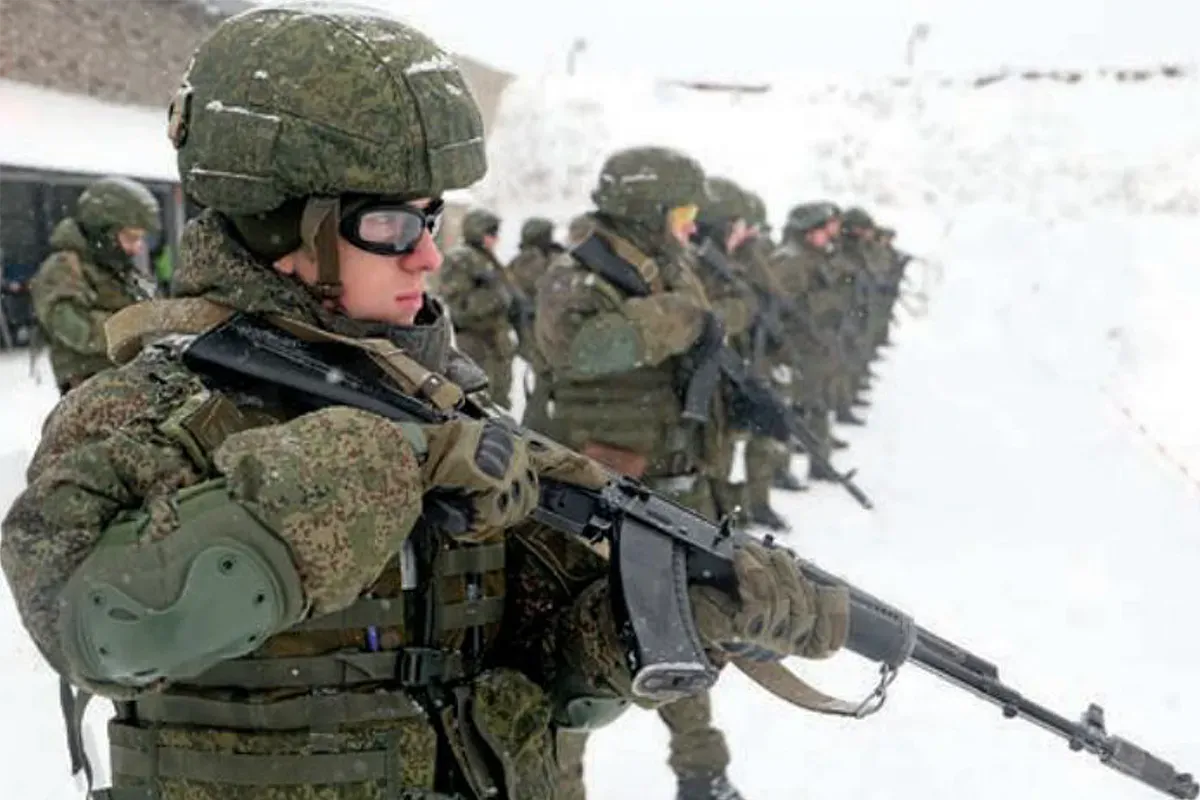The goal of disrupting the strong bilateral relationship between the Russian Federation and People’s Republic of China (PRC) is a key point of interest for American policymakers. Yet discussion often stays at a high level or focuses on challenges rather than solutions, leading to an analytic dead-end. But the need for real solutions is acute: the so-called “no-limits” Russian-PRC alignment, already strengthened over the 2010s by military and economic cooperation, has significantly deepened since the onset of the Russia-Ukraine war in 2022. Indeed, it is an important reason for Russia’s sustained capabilities in the face of a multiyear US-led sanctions regime.
Both Moscow and Beijing have worked actively across their portfolios of interest to deepen the existing relationship. Russia-PRC trade turnover is now close to $250 billion. Russia is actively sharing military technology such as jet engines, according to public reports. The PRC continues to sell dual-use goods that the Russian military-industrial complex requires for the war, including computer chips and machine tools. And both sides have managed to avoid antagonism in areas where there are potential overlaps in their perceived spheres of influence, especially in Central Asia.
The Trump administration has suggested that the United States must look for ways to drive wedges between Russia and the PRC, a policy sometimes referred to as “alliance wedge strategies” by academic and policy researchers. During the campaign in the fall, President Trump suggested, “I’m going to have to un-unite them, and I think I can do that.” Among commentators and policy analysts, this approach is increasingly termed the colorful “reverse Nixon” gambit, contrasting it to Nixon’s rapprochement with China in part to weaken Sino-Soviet unity.
Although a difficult issue to crack, there are ways to wedge apart the relationship—or at least to prepare the geopolitical environment for a future break in relations. Setting the strategic environment requires a combination of carrots and sticks: increasing pain-points in the relationship while also modifying rhetoric and diplomatic posture to take advantage of existing, latent tensions. Although the fruit of wedging efforts will take time to emerge, exploiting the weaknesses in the Russian-PRC relationship is not an impossible task
I propose three relatively straightforward ways to begin revising the playing field in favor of driving apart these aligned adversaries. First, in the immediate term, increase the costs of economic coordination between Russia and China. Both sanctions and tariff policies could aim to maximize pain on China for cooperating with Russia. Second, over the next several years, accept the shift toward multipolar cooperation between Russia and India, which over time could introduce new friction into the Russia-China relationship. And third, shift diplomatic emphases to strategic stability issues and communicate the risks of a rising China to Russia’s geopolitical position in eastern Eurasia.
In essence, the United States should pursue a policy that incurs (economic) pain on China so long as its Russian connections continue to deepen, while allowing for a more conducive geopolitical and diplomatic setting in which the US does not instinctively oppose Russia’s relationships with other Eurasian powers. In doing so, Russia may entangle itself in the ongoing dynamic of India-China mutual distrust, ultimately weakening the Russia-PRC relationship organically.
Setting a ‘Wedgable’ Playing Field
Current conditions in the international states system remain conducive to continued Russia-PRC alignment. Russia and the PRC simply have no obvious reason to break their partnership. Creating those reasons requires changing the foreign policy calculus of both states—a process that will require both specific policies and generic geopolitical orientation shifts over different timelines. The best way to wedge the two states is to build a new reality in which they make hard cost-benefit calculations or fall into decision-making patterns that wedge themselves out of alignment. For these reasons, it is incumbent on any American wedging strategy to prioritize ways in which tensions and frictions between the two parties can be heightened.
First, the US can pursue a “stick” tactic by more closely coordinating economic pain for China, given its continued support of Russia. This can be achieved first by tightening general sanctions against China so long as they continue to help Russia evade sanctions and supply dual-use technologies across the Russian border.
More creatively, the US can create a “carrot” mechanism for lowering tariffs on Chinese goods that is connected to the reduction of Chinese exports into the Russian market. Simply put, less interstate trade with Russia would equal lower tariffs on the US-PRC economic relationship, which is ultimately far more valuable to China. This argument, made recently by Andrew Taffer, has the benefit of locking into the tariff policy regime already being developed. Admittedly, this approach would require the US to modulate policy goals of confronting Chinese economic dominance by tying it to reducing economic relations with Russia.
Second, the US should take advantage of Russian leadership’s persistent and longstanding concerns about international status and prestige. Moscow has taken a terrible reputational hit in Europe and North America by prosecuting the war in Ukraine, and for this reason remains very interested in buttressing its relations and status, especially in the Global South—most notably with India.
The US should let this happen. India has not joined the anti-Russian sanctions regime and will not be doing so in the foreseeable future, a reality that our recent CNA report on the Russia-India relationship makes clear. Instead of hoping against hope that New Delhi will have a change of heart, the US should lean into the very multipolarity that Russia, India, and China all argue should exist. Given the tensions that already exist between India and China, this is the most plausible route to encouraging increased frictions over time between Russia and China.
Washington could allow Russia and India to move closer together by, for example, ending sanctions on Russian military exports to India or simply signaling that the US trusts India to make its own decisions on international partnerships. Closer Russia-India ties mean at least a good chance of weakened—or at least more suspicious—Russia-PRC ties. And since there is a ceiling on how far Russia-India cooperation can go, as Daniel Markey and David Brostoff have recently written, Washington need not fear that these relations will undermine its existing postures with New Delhi.
Third, the US should focus on a portfolio of strategic stability engagements with Moscow, such as restarting (perhaps fruitless) arms control contact points, working together against nuclear proliferation, and otherwise keeping open direct and indirect dialogue channels. But more unusually, the US should do so while emphasizing the material danger of the PRC to Russian security—speaking the language of Russian military planners as a means of diplomatic framing. Instead of signaling that the US simply opposes Russian aggression and somehow expects it not to seek other allies, Washington should strongly signal that Russia’s Far East and its sphere of influence in Central Eastern Eurasia are under threat, and that the PRC means to exploit it in the future. The US can simply make the case that it recognizes, and is tracking, that Russia’s material military-strategic position is slipping away in the region.
The PRC is modernizing its military in a way that is as threatening to Russia as it is to the US. It is keenly interested in expanding influence in the Arctic and integrating Chinese technology and economic interests into ports across the littoral of the Eurasian heartland. All of these suggest growing military-strategic concerns to Russia, which need only be regularly emphasized in diplomatic and elite engagements to subtly increase tensions. Furthermore, insofar as a medium- to long-term goal of the US is to reduce the threat perception of NATO to Russia, highlighting PRC threat will become more plausible in Moscow.
Wedging’s Challenges and Potential
Achieving the desired results of these policies will remain a challenge. Russia is militarily and economically dependent on the PRC while under Western sanctions and continuing the war in Ukraine. Meanwhile, the PRC desires access to Russian energy, raw materials, and advanced military technology. Moscow and Beijing also share a distaste for Washington and a mutual desire to balance against the perceived threat of the United States. Growing coordination in all these areas has further deepened bilateral institutional and elite network ties.
Only the first of these three suggestions could drive a hard wedge between the two sides immediately. The second and third are longer-term, groundwork-laying practices that will bear fruit by signaling acceptance of Russia’s place among great powers—not by acceding to conquest in Europe, but by encouraging the uncertain and suspicious dynamics of multipolarity to play out on their own in the Eurasian states’ ecosystem.
In all cases, these approaches are designed generate future frictions between Russia and the PRC that can be exploited later on. It is tremendously difficult to drive a wedge between two powers on course for further alignment after a decade-plus of considerable and diverse investment. While waiting for exogenous shocks and unique events that can be used as triggers for further wedging, the US still can shape the overall geopolitical operating environment. By preparing the field in these ways, the hard task of wedging can be made manageable and the probability of success raised, even if on the margins.



